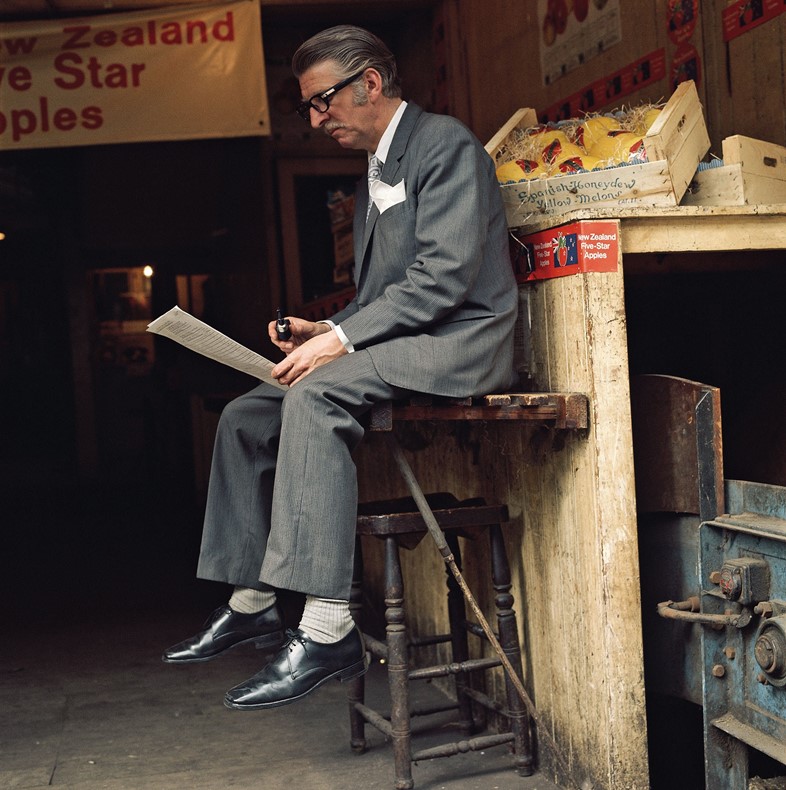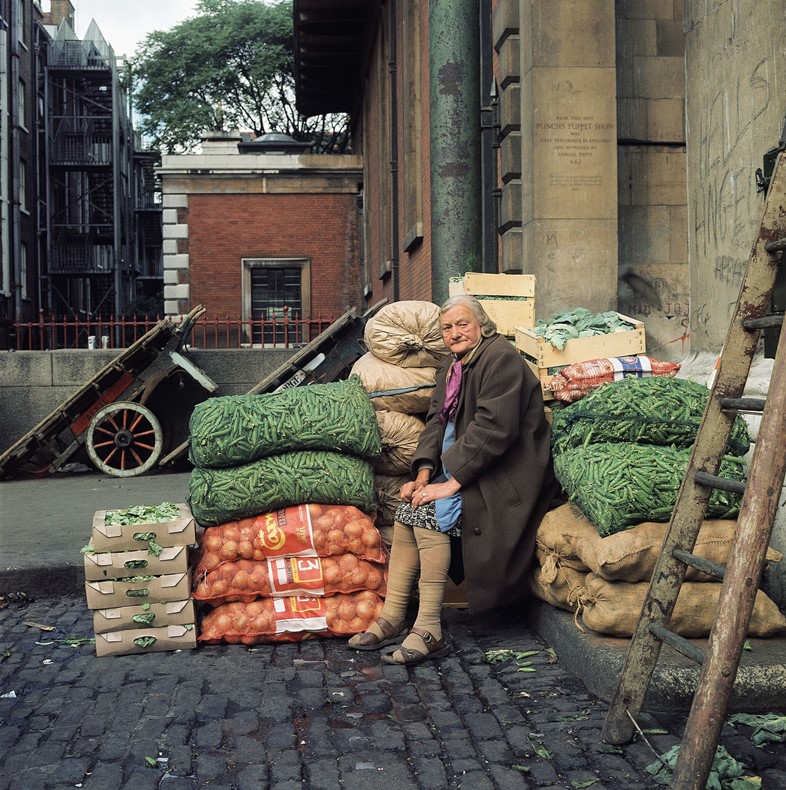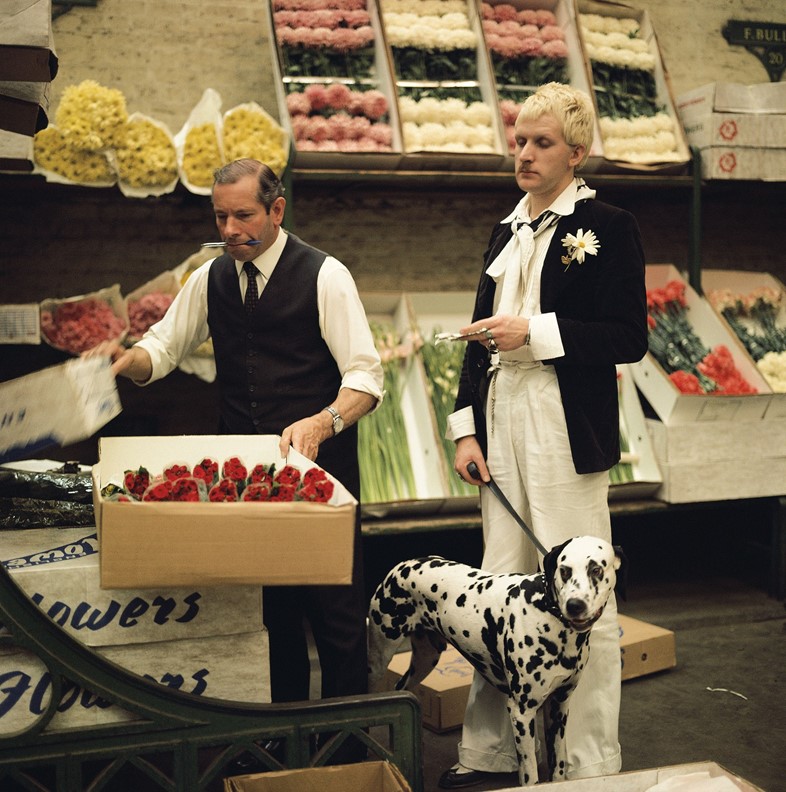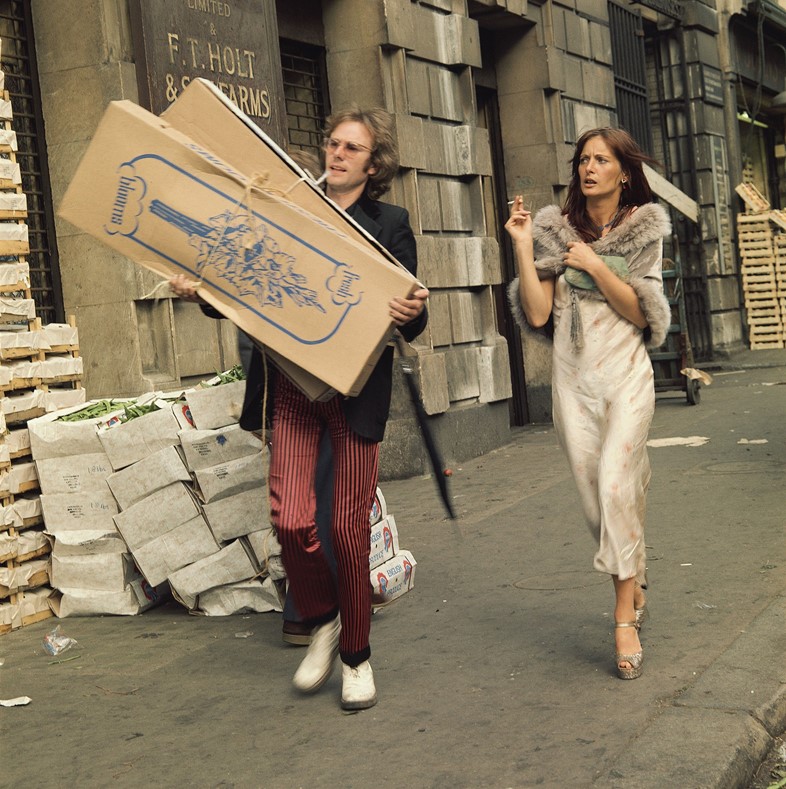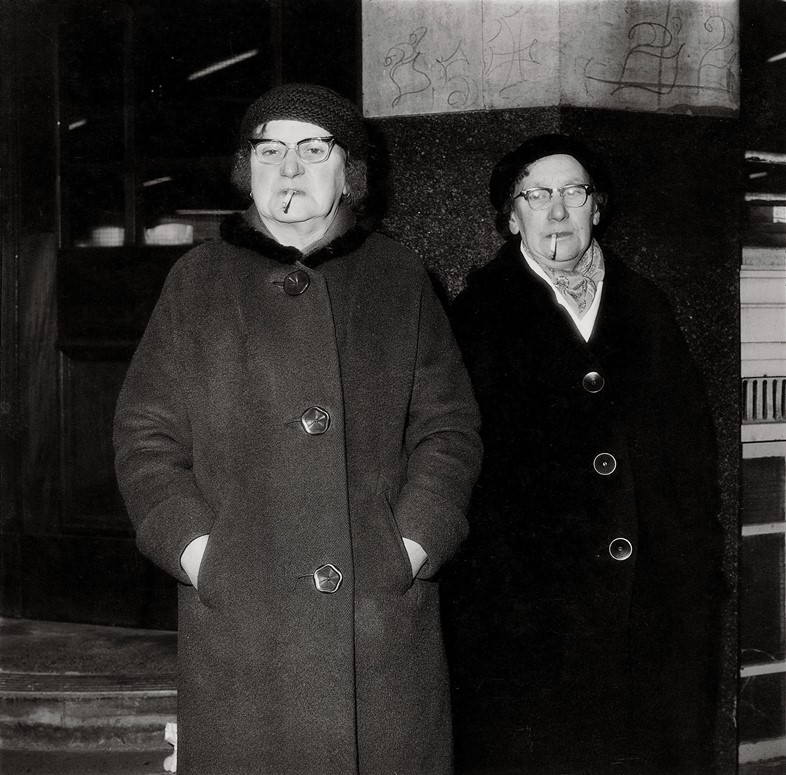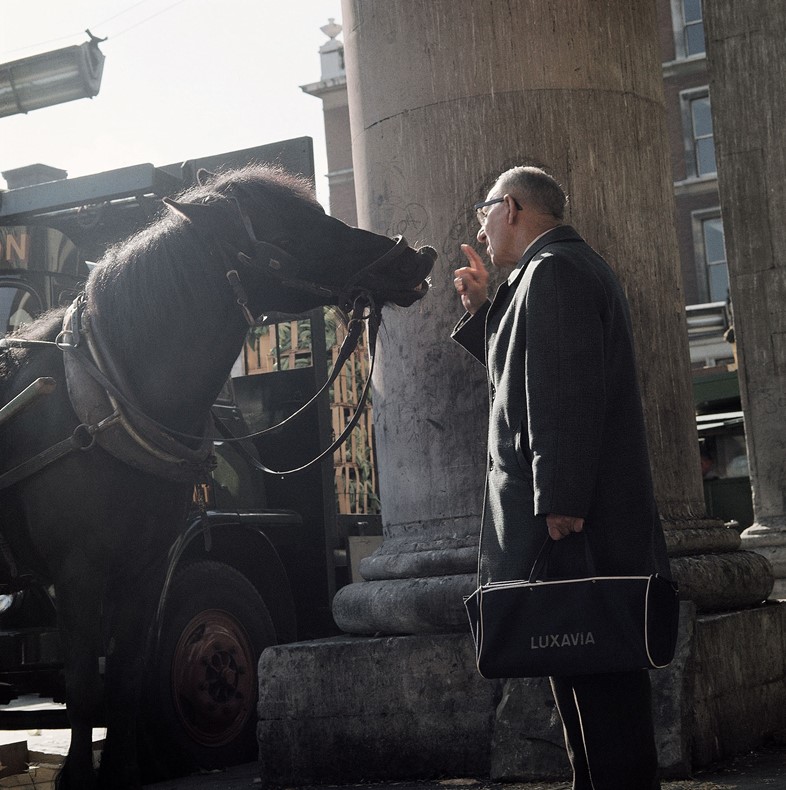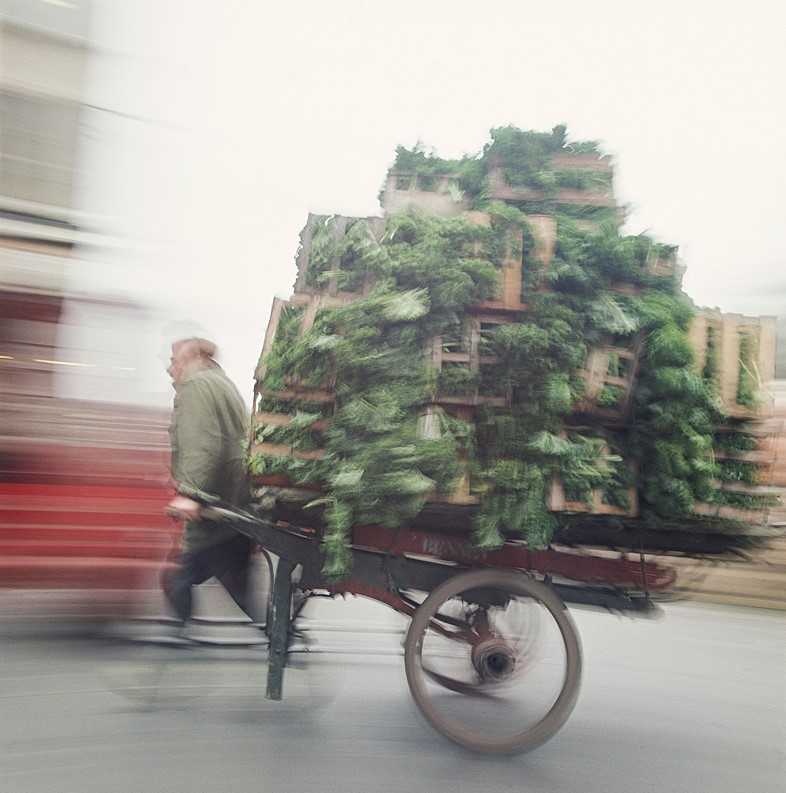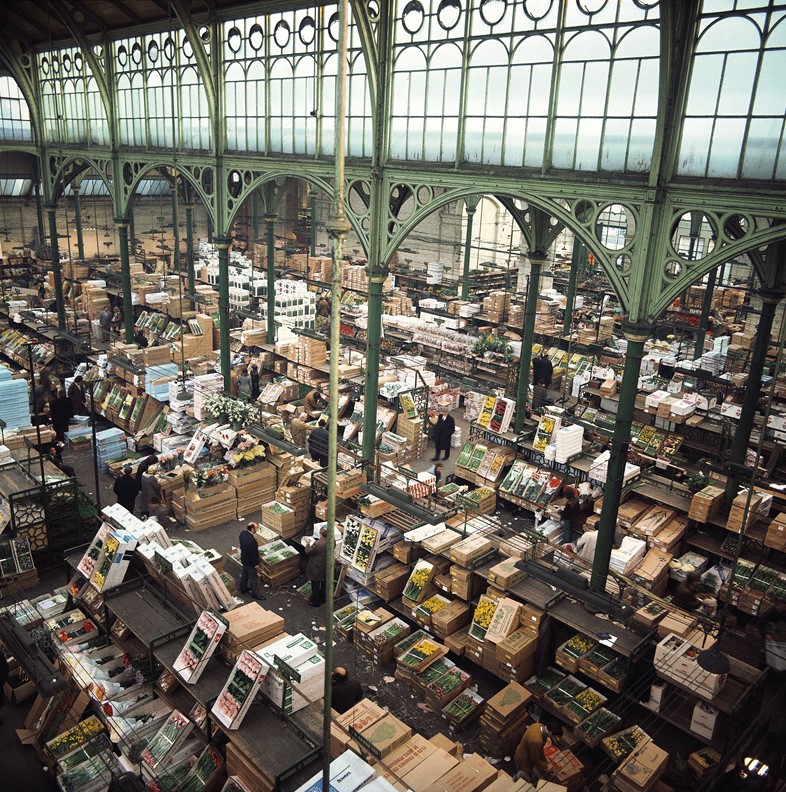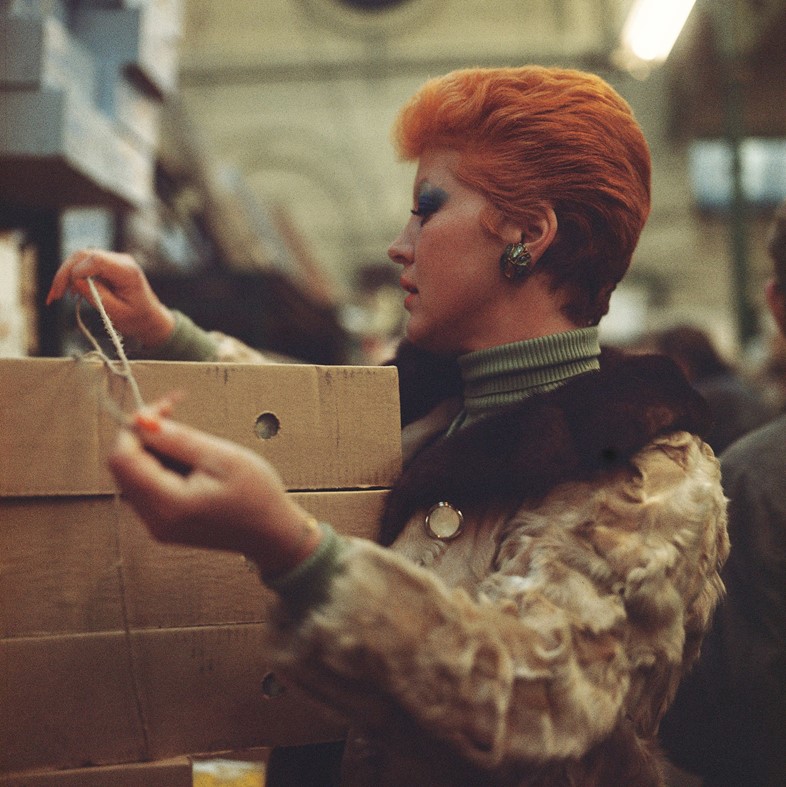Clive Boursnell spent six years photographing one of London’s most charming markets, until it closed in 1974
Two women sit making bundles of lavender in identical yellow cardigans. Porters pause by bags of onions. A customer clad in black and white for the opera inadvertently (or purposefully?) matches his Dalmatian. Men balance teetering piles of chrysanthemum boxes between them. A buyer peruses lettuces with thin-lipped concentration. Horse-and-carts rattle alongside trucks. A couple wander through in their silks and striped trousers. Traders stop for a well-earned drink. A spillage of cherries pockmarks the cobbles red.
Clive Boursnell’s photos of Old Covent Garden Market, captured between 1968 and 1974, are a marvel to behold, his beautifully observed reportage capturing the myriad sights, characters and details making up central London’s main market in its final years. They are mesmerising images – sensitive testament to a place where once fruit, vegetables and flowers existed in a continually vivid ebb and flow of transaction, and a remarkable community made their living.
Over the course of those six years Boursnell recorded the comings and goings of the market with fastidious devotion, documenting and building up relationships with the many people who worked in and around the market. It quickly became an all-consuming project. As he reflects, “in 1968 I was already very aware of Covent Garden market, but what I suddenly realised very early one morning at the top of James Street – seeing the light casting a long, lit shadow, and the cigar smoke going up from the salesmen, and the dust from produce and the horses and the clatter of the barrels and the camaraderie between the porters and truck drivers and buyers – was this incredible display of humanity going on, all based upon trade. That interaction between produce and person… Suddenly I had this overwhelming passion to photograph it.”
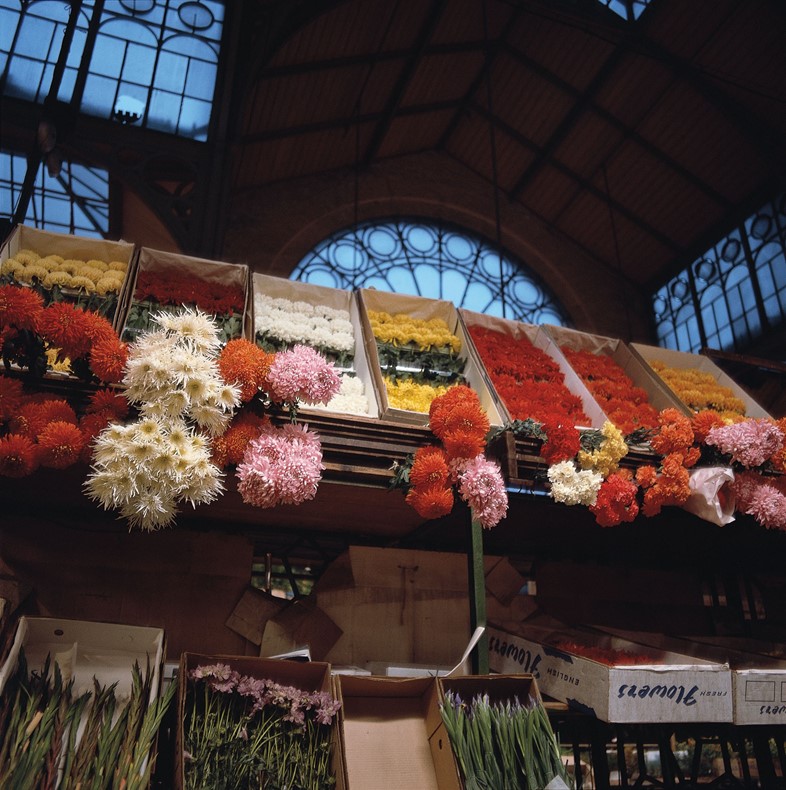
This passion took him there all year round, at every possible hour of the day. Beginning at the age of 28 with just a Hasselblad 6x6, as time wore on he’d soon be found with three different cameras slung around his neck, darting around the traders and barrows piled high with cabbages. “It was my love and respect that was the driving force,” he says. “It was also the force that the market people recognized. When I first started it was all, ‘oh I suppose you think you’re a fucking good photographer because you’ve got that fucking fancy camera, mate. Who gives a shit. Out my way.’ Well, suddenly I started to appear in the rain. In the frost. I was there in the early morning. And it took about nine months for the people to get to know me…”
As Boursnell goes on to recount in the foreword to his book Covent Garden: Then & Now (one of several featuring a selection of the thousands of photos he took), this hard-earned respect gave him a unique status and access to the goings-on of the market. Doors were opened and scenarios witnessed that few others were privy to. Along the way he was free to wander and observe. It was the body language of those around him that often compelled him most. “The way people exchanged money from one hand to another, the way a buyer picked up a courgette or an aubergine and handled it.” He also talks about the changing conditions and seasons with Monet-like fervour. “The way the light would strike off oranges one morning and splash across pears the next. The way the rain trickled across cabbages, or snow across carrots. Or how people would push their barrows on a beautiful summer morning [compared to] a round-shouldered hunch in winter.”
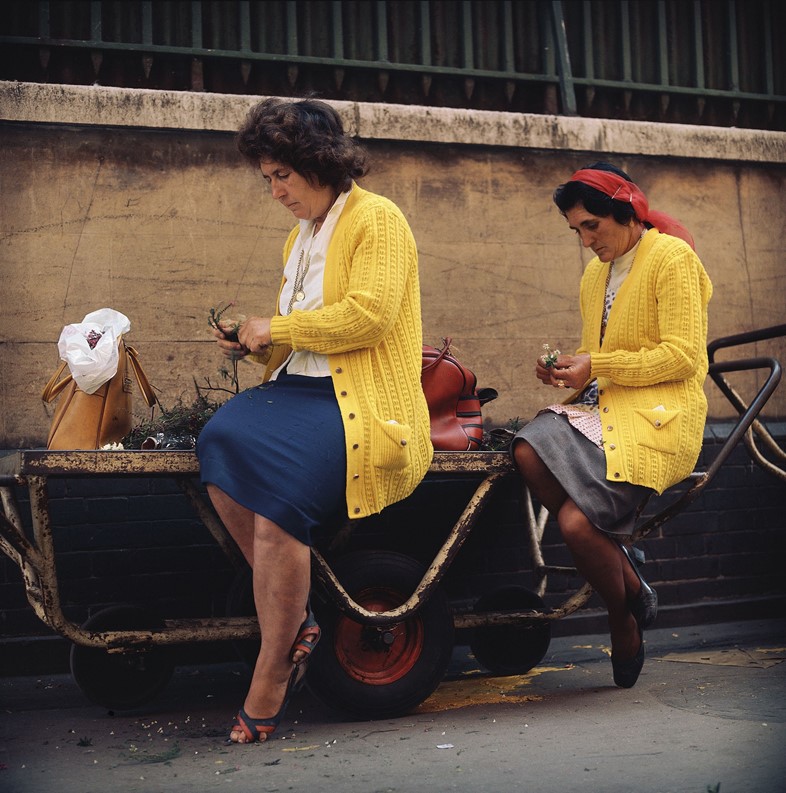
The market officially stopped trading on Friday 8th of November, 1974 – the entire enterprise relocated to Nine Elms in Vauxhall. Boursnell, of course, was there, recording the end of a very particular era of London history. The following Monday morning he returned to Covent Garden to photograph crowds of office workers walking, for the very first time, past the closed up market. He shot 52 rolls of film of a place forever changed; a place that, over the subsequent years, would see huge transformation – the densely packed seethe of shops, restaurants, tourists, and street performers that now exist in its place making for a very different kind of bustle.
Still, Boursnell’s portraits remain, encapsulating the old market in its many moods and moments. It’s this plurality that perhaps makes his work especially compelling. Here everything is caught in passing. A hand. A face. A shared joke. A lit window. A box of broad beans. A barrow being pulled across slushy streets. A silent space waiting for the day’s deliveries. “Each picture is like a tiny facet of a multifaceted diamond before it becomes a whole,” he says. “I asked myself time and time again, ‘if I could only use one piece of film, what is the picture I’d take to say this is Covent Garden?’ – and I was never able to answer it.”
